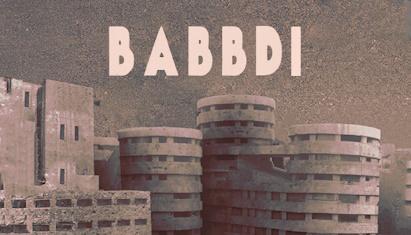Babbdi
Walking simulators have evolved significantly as a genre within the gaming industry, providing a platform for storytelling through the exploration of detailed environments. This genre prioritizes atmosphere, narrative, and character development over traditional gameplay mechanics such as combat or puzzle-solving. I chose to play the walking simulator game Babbdi, created by the indie developer Lemaitre Bros and available on Steam.
In Babbdi the player navigates an eerie, abandoned, brutalist city to find secret objects and scraps of information to help the player find a train ticket to leave the city. This single objective acts as the motivating backbone of the game, but the mechanic of walking to explore the map causes the user to have strange experiences and encounter mysterious scenery that slowly builds a rich and fascinating story around the simple backbone objective (similar to life I guess :0 ).
As soon as I was deposited into the city of Babbdi, it was clear that this wasn’t a place I wanted to stay for long. The city itself looks like it could be the setting for 1000 different horror movies. Instantly, I wondered about the history of the city and what I was doing here. After talking to a few creepy stationary people dwelling in barren jail cell-like rooms, I learned that my inkling to get out of the city was indeed correct. I learned that my overarching goal was to somehow get train tickets. I found a motorcycle and began cruising around the map looking for things that stood out (people, rooms, objects, etc). While I was not able to find tickets during the time I was playing, I became fully immersed in the world of Badddi. My curiosity continued to grow the more I encountered strange people, certain rooms with much more detail than the rest of the map, and objects that allowed me to learn more about the city. The designer of the game did an excellent job shrouding the game in just the right level of mystery, which served as fuel for the user to keep learning more and uncovering the narrative (like reading more pages in a novel).

In terms of the MDA framework, I think that the aesthetics are carrying this game. It’s filled with austere yet nostalgic landscapes that are off-putting at first and comforting once you realize you are more or less safe in Babbdi. Additionally, most actions you take in the game are pairing with a bold and slightly off-kilter sound choice that feels like it’s echoing through the whole silent city. Lastly, the varying ranging in the level of detail in certain rooms, walls, and parts of the landscape quietly direct the user’s exploration and attention in the game, allowing the artists to inject story elements into the users mind.
While walking simulators have received backlash from the gaming community, they can be really powerful and memorable devices for storytelling that work in subtle ways. Additionally, they are typically cheaper to produce, allowing the authenticity and artistry of indie developers to shine through.



